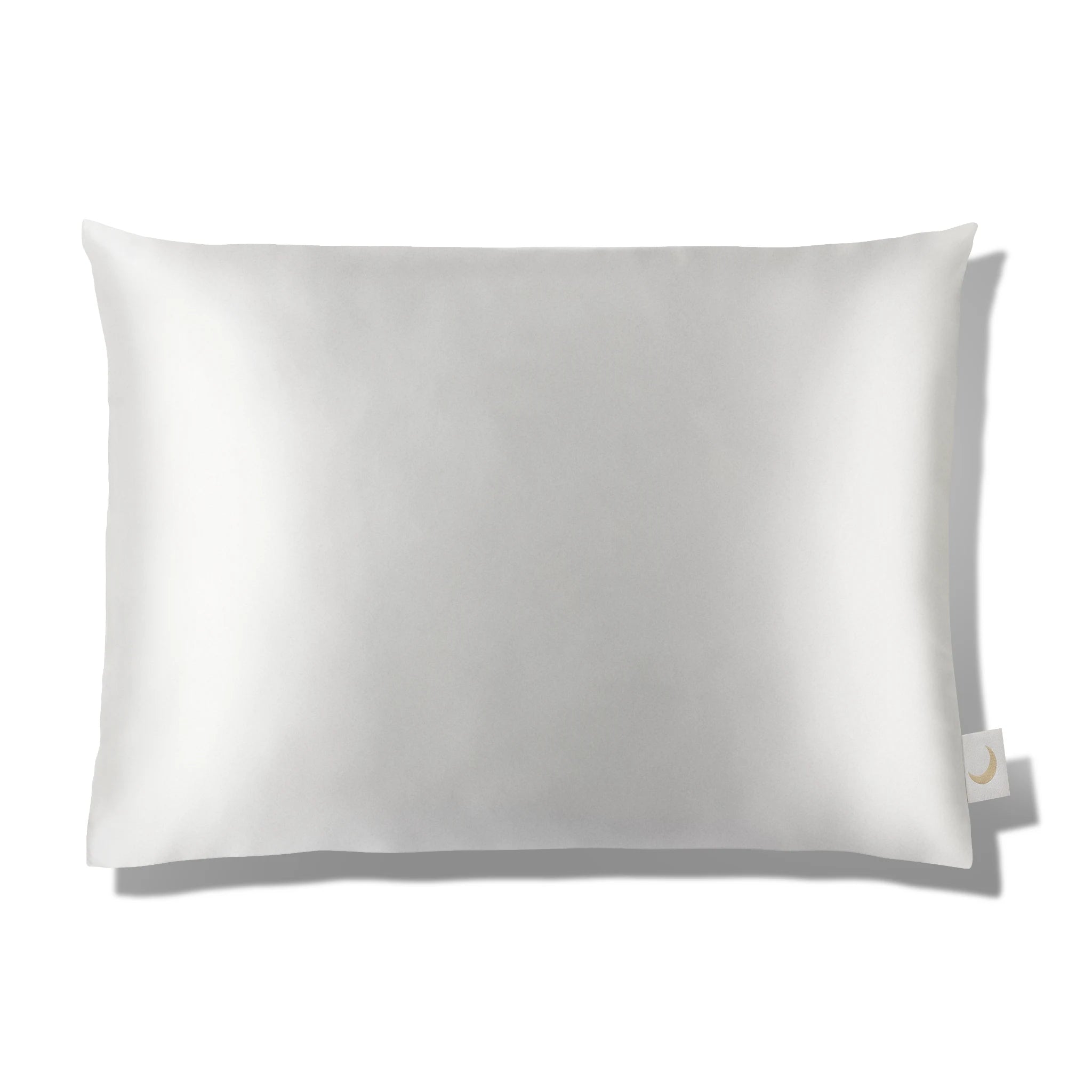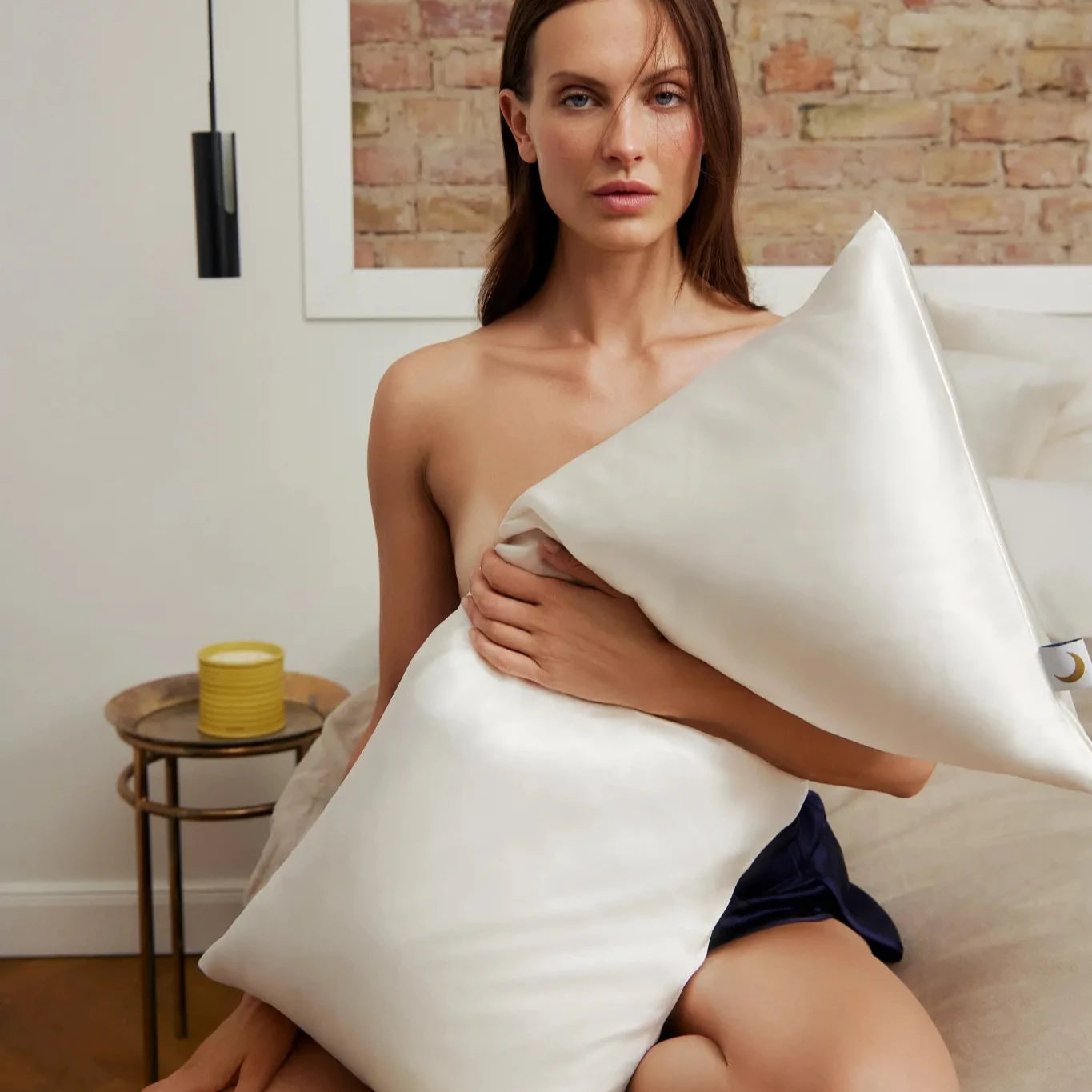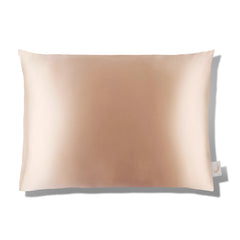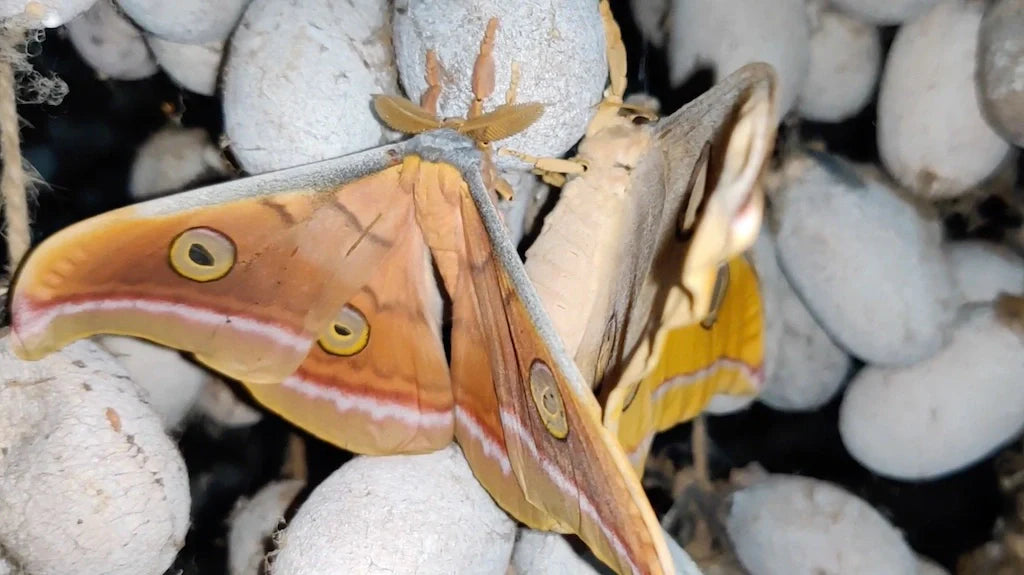Are silkworms harmed in the production of silk?
After years of research and study, we now understand and know the benefits of silk pillowcases to fight frizz, split ends and wrinkles - but there is always that one thought that ethically-minded sleepers have when they lie down on their beloved silk pillows: the animal welfare aspect of silk production, as silkworms are harmed in the silk production process. In contrast to Peace Silk, conventional silk is not cruelty-free.
Peace Silk Production - What is Silk? How is it Made?
Silk fibers are 97% protein. The silkworm larva produces silk in order to build a protective cocoon around itself for undisturbed metamorphosis. Prior to this, the larva feeds on a specific type of food - mulberry leaves - to produce mulberry silk. When the cocoon is ready - the silk farmers throw the cocoons into boiling water. They do this to kill the silkworms before they eat their way to freedom, destroying the cocoon with its precious fibers. It's even common in rural areas to eat the boiled silkworm caterpillar.
However, boiling the cocoons is necessary to soften the sericin that holds the silk fibers together. Each cocoon contains up to 1.5 km of thread. Depending on the size of yarn required, the unwound threads from 3 to 20 cocoons are then spun together to form a single strand of silk thread. This whole process is called sericulture and is carried out in an artificial environment.
The part where the silkworms are boiled alive and killed is the part that horrifies every animal rights activist, including us. So we went looking for alternatives and found a cruelty-free choice in Peace Silk.

Peace Silk – What is Ethical Silk?
Peace Silk, also known as Ahimsa Silk, is an ethical alternative to conventional silk. It is a type of silk that is produced without harming the silkworm. Unlike conventional silk production, which involves boiling silkworms alive in their cocoons to extract the silk fibers, Peace Silk is produced by allowing the silkworms to complete their metamorphosis into moths before harvesting their cocoons.
Ahimsa is a Sanskrit term meaning 'non-violence' or 'non-harm'. It is a principle of Hinduism, Buddhism and Jainism that encourages the practice of non-violence towards all living beings, including animals and plants. Ahimsa is considered one of the highest virtues in these religions, and is often seen as a key principle of ethical behavior and spiritual development. In the context of Peace Silk, the term Ahimsa is used to refer to silk that is produced without harming silkworms, as a way of practicing non-violence towards these creatures.
Ahimsa means to live with respect for all living beings. That's what Ahimsā or Peace Silk is based on, and that's the principle Moonchild is based on.
Peace Silk or Ahimsa Silk - how is it made cruelty free?
Peace Silk is non-violent silk and an ethical fabric. No silkworms are killed in the production of Peace Silk. Instead of boiling the silkworm alive, they are allowed to hatch. They are able to do this because the farmers make small cuts at a certain point in the cocoon. This allows the silkworms to hatch almost naturally while preserving the precious filament. Think of it as a form of gentle midwifery. The cocoons are collected as a by-product in the wild and then boiled (without the chrysalis inside).
Peace Silk doesn't use genetically engineered silkworms, or those that have lost their ability to fly or eat over generations of breeding - and would face a different kind of death from starvation. This is also common practice in conventional silk production.
Ahimsa Silk typically adds an extra 10 days to the process to allow the silkworms to grow and hatch, as well as some additional work steps. Whereas the conventional and less humane way only takes about 15 minutes. Peace Silk is more labour intensive and costly, but we love and support the ethical approach and working around a conventional process that has been challenged - and ethically improved.
Organic Peace Silk Fabric
It has taken us many years to source Peace Silk fabric of the same quality as the finest conventional silk available on the market. Peace Silk is a truly organic silk fabric. Our Peace Silk production and plantations are located in India, where the silk moths feed on mulberry trees, thus producing mulberry silk. The silkworms feed only on mulberry leaves, hence producing a smooth, strong and round mulberry silk thread, the most sought after quality of silk. These virgin silk filaments from the cocoons are then spun together to produce silk threads, which are later woven into a silk fabric, just like cotton or linen.
The wild silkworms also contribute to local pollination and thus increase the local botanical diversity - just like the bees do. Our silk does not come from domesticated silkworms like the traditional bombyx mori silkworms, but from the bombyx indica silkworms. The bombyx mori are considered domesticated silkworms that may have lost their ability to eat and fly during generations and generations of selective breeding in the silk industry. The growing Peace Silk industry originates in India with different suppliers and different qualities.
Peace Silk: Is it Mulberry Silk or Eri Silk?
Peace Silk fabric, just like regular silk, can be made from many sources such as Tussar Silk or Eri Silk and gets its name from the food of the silk worm. Our silk is made from silk worms. The silk worms are fed only with mulberry leaves, thus producing silky smooth mulberry silk. The Ahimsa Silk production process does not kill either female or male silk moths. Ahimsa Silk production is still only a small percentage of the global silk industry. The portion of the organic Peace Silk industry is estimated to be less than 1% of the world's conventional silk production.
Peace Silk: What is the Environmental Impact?
In addition to being a more humane alternative to traditional silk production, Peace Silk also has environmental benefits. Conventional silk production requires the use of harmful chemicals and large amounts of water, which can pollute the environment, harm local ecosystems and result in toxins in textiles. Peace Silk, on the other hand, is produced using natural, organic methods that are gentle on the environment.
What this means:
- No pesticides are used on the mulberry plantations.
- No toxic fertilisers, insecticides or fungicides are used in our production. Instead, huge nets are stretched over the trees to protect them from predators.
- No chemicals are used during the production process, whereas conventional silk production uses toxic salts for degumming, such as barium, chromium, lead or iron, to name a few.
- No toxic chemicals or finishes are used that can be harmful to human health and the environment.
Peace Silk: What Are the Health Benefits?
All of the aforementioned features improve the environmental and animal impact - but they are also a plus for us discerning dreamers. We sleep on silk in its purest and most honest form, so we use a beauty product in our daily lives that is free of harmful toxins and chemicals.
Silk is generally antimicrobial, hypoallergenic and acts as a natural dust mite and fungus repellent. This makes it one of the cleanest materials to sleep on. Allergy sufferers have always known this. All of these benefits make Moonchild Peace Silk pillowcases safe to rest on at night with a clear conscience, making us sleep, look and feel better.
Is Peace Silk Vegan Silk?
Depending on the definition of vegan, Peace Silk can be considered vegan-friendly or vegan, as n o animal cruelty is involved. The cocoons are collected as leftovers after the silkworm has completed its metamorphosis and no longer needs its protective cocoon. If vegan is defined as any type of animal product, then Peace Silk would not be considered vegan.
All other fabrics and vegan silk alternatives consist of synthetic fabrics and would then not be a natural fiber. Silk production requires silk worms. To make silk, silk worms must produce a continuous filament and form it into a cocoon. Lotus silk is the only exception to the vegan alternatives: it comes directly from the lotus flower and does not involve a silk worm. However, this wonderful material is very rare and expensive.
Peace Silk - the Truly Better Alternative?
Organic Peace Silk is a natural material made from the cocoons of silkworms. Peace Silk is produced without harming the silkworms, unlike in conventional silk industry, where they are boiled alive in their cocoons. In addition to being cruelty-free and allowing for a full metamorphosis, Peace Silk has another extraordinary benefit: the silk itself and the production process are completely organic and free from any potentially harmful toxins.
The use of organic Peace Silk has become increasingly popular in the fashion industry in recent years. Many designers and brands are now using Peace Silk to create luxurious, high-quality garments that are both ethical and sustainable. In addition to being kinder to the planet and its inhabitants, Peace Silk has a unique texture and drape that sets it apart from traditional silk, making it a popular choice for a variety of sleepwear such as silk sleep masks and silk gowns. By choosing Peace Silk products, you can enjoy the luxurious feel and unique texture of silk while supporting humane and environmentally friendly production methods.



















